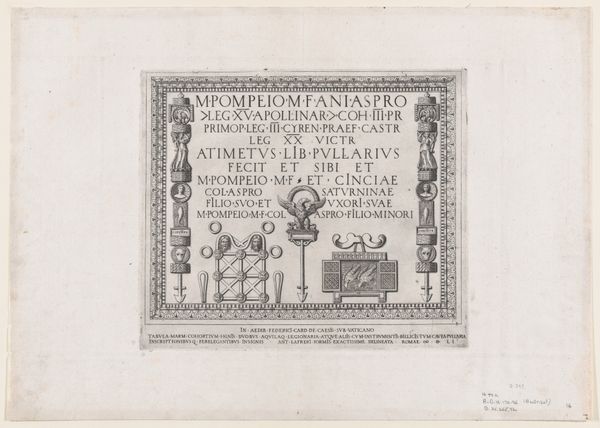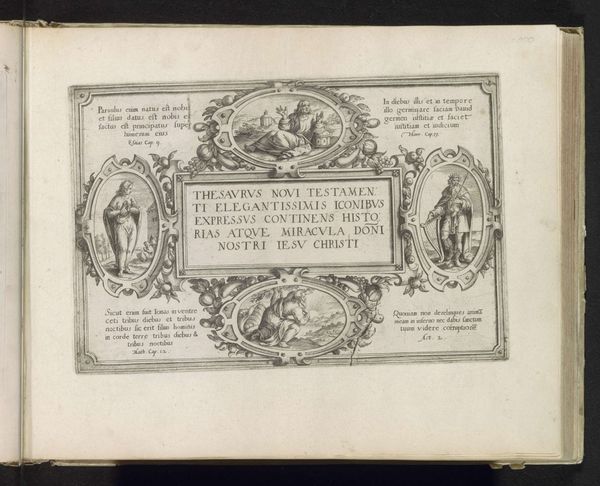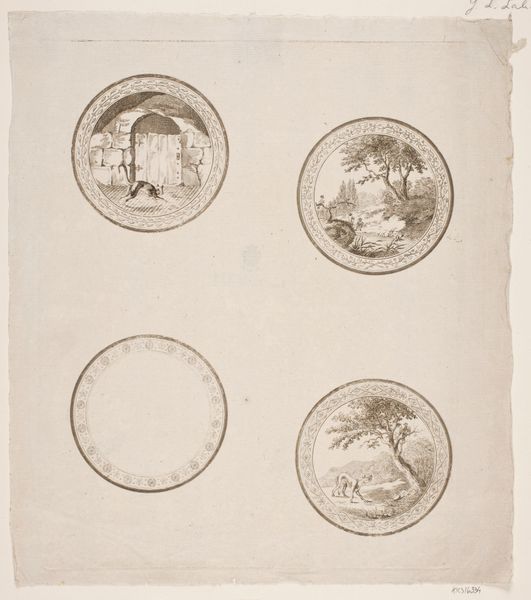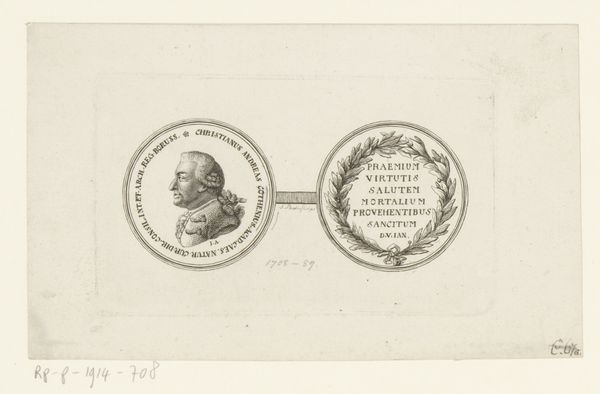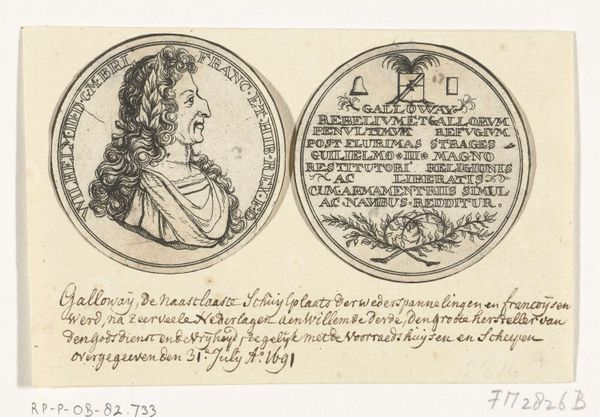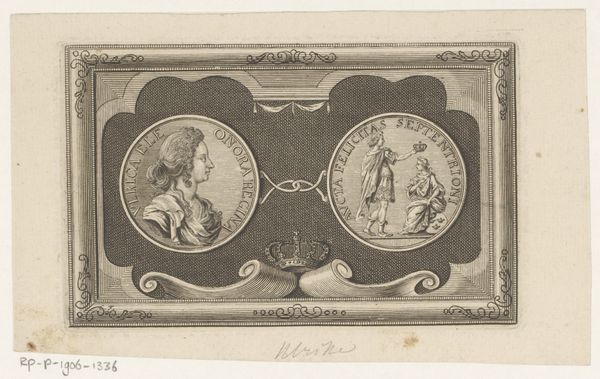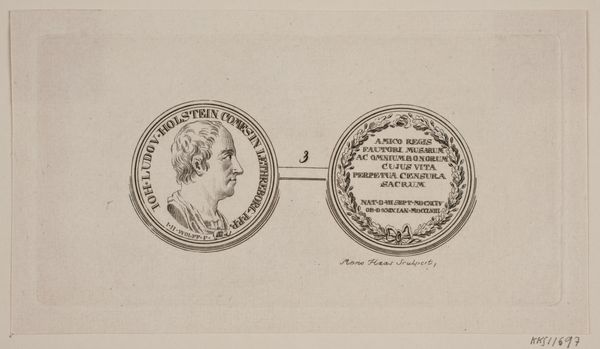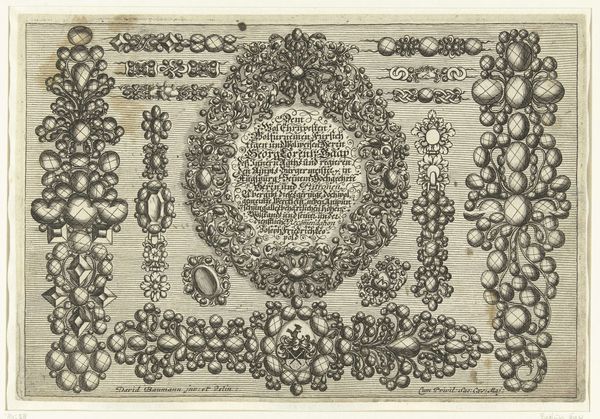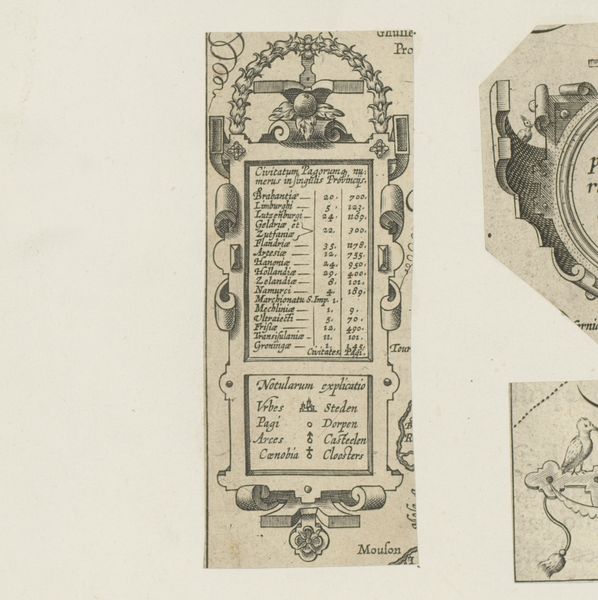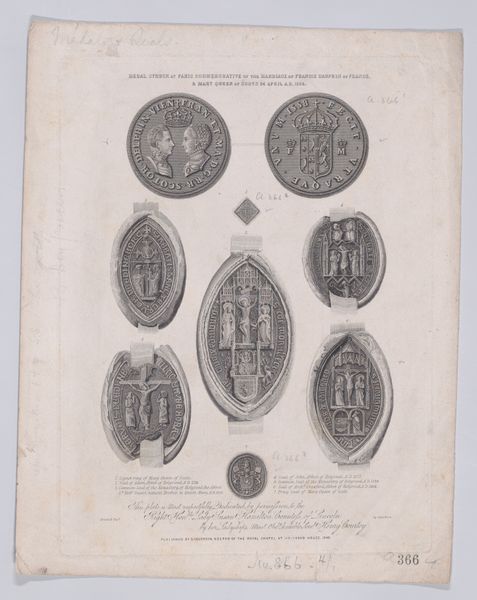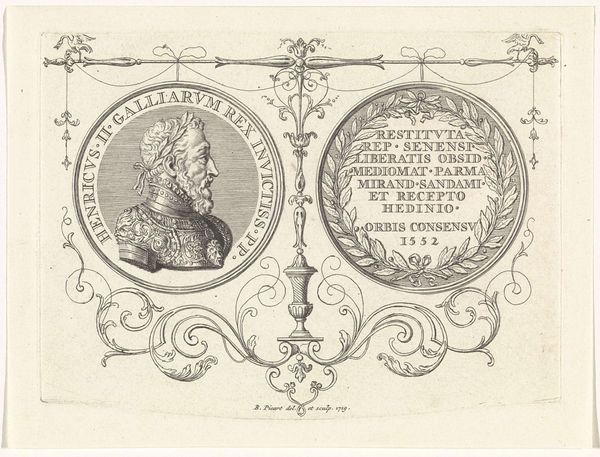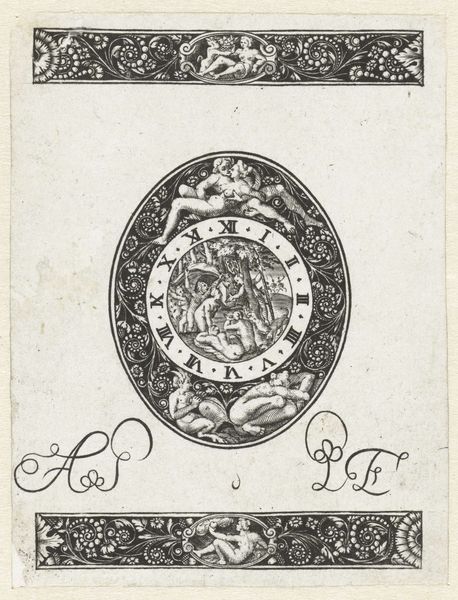
print, engraving
#
portrait
#
baroque
# print
#
engraving
Dimensions: 81 mm (height) x 166 mm (width) (plademaal)
Curator: Looking at this intriguing piece titled "Erindringsmedaille efter krigens ophør 1660," or "Commemorative Medal After the War Ended, 1660," created between 1660 and 1662 by Albert Haelwegh, the first thing that comes to mind is just how laden with meaning such an object must have been back then. It’s more than just a pretty engraving; it’s a powerful, political souvenir! Editor: Immediately, I see labor, I see production—the fine, painstaking detail of the engraving itself. How many hands were involved in making these? Were these objects of mass consumption or just limited for elites? Curator: Well, the medal commemorates the end of a war, the liberation of Copenhagen—so its symbolism would likely have been incredibly poignant. I feel a distinct sense of relief radiating from it, mixed with a bit of Baroque theatricality, naturally. Look at those oval portrait vignettes, each framed with such deliberate care. Editor: True, and this deliberate care, as you put it, screams of control—control over the narrative of that time. Commemorating key events of 1658-1660, Frederico Tertio’s triumphs—who gets to tell this story and who is left out? The text certainly adds to that…a declaration of power and an effort to produce allegiance, not just art. Curator: That’s such a clever read. And the very material – the engraving, a medium accessible for replication – implies the desire for broader dissemination of the Crown’s victory and influence. It’s a memory made manifest! The very opposite of ephemeral, or intimate. Editor: Exactly, this brings to the forefront that art making always comes with deliberate, calculated intent, whether to produce art that speaks for everyone or art intended to further cement hierarchical power dynamics. Consider the role Haelwegh, the engraver, played, lending their skill to amplify a specific narrative... I'm wondering about the role of the state, as an early patron, even investor, in image making. Curator: It all comes together beautifully – a potent symbol that reminds me just how complex ‘simple’ celebratory objects can be. I come away seeing layers that speak of triumph and lasting implications of those victories. Editor: And I, equally intrigued, appreciate it as an emblem of process—both the artistic labor and social maneuvers ingrained in what seems, at first glance, like mere honorific ornamentation.
Comments
No comments
Be the first to comment and join the conversation on the ultimate creative platform.
